2022 Honda Civic Hatchback: Boring Gay Car Review
Is the redesigned Civic enough to stay on top of the latest competition?
The Honda Civic is synonymous with value. I don’t it’s ever not within the top 10 list of best-selling cars in America. Even in 2020 (when it was at the tail end of its 10th generation design), it was the 8th best-selling car in America with 261K units sold. I was recently able to review the 2022 Civic Hatchback in the Sport trim, and I was pretty darn impressed.
In the last few months, you may have noticed the newest Civic hitting the streets. The 11th generation Civic has been completely redesigned and joins us in sedan and hatchback form (some might be sad to hear that the coupe no longer exists). When the first photos of the new design dropped, “car Instagram” seemed to have a polarized response. Some people thought the new design was too boring or looked too similar to the current Accord. Others thought the new design pushed the Civic forward in sophistication. It’s definitely less quirky than the 10th generation design (which I really liked), but the new design is growing on me. The front end (which is exactly the same on the sedan or hatchback) is flawless in my opinion - super refined and handsome looking. I’m less in love with the rear of the sedan - though it does kind of look like an Audi design. I also wasn’t immediately drawn to the rear on the hatchback, but it is beginning to grow on me. All in all, I don’t think the design is going to deter many people from the car - in fact, I expect a broader range of buyers to flock to it based on the high-end look.
Who Would Drive It?
First things first - what type of people drive a Civic? Smart people, for one. These things are packed with value, are pretty efficient for not being electrified, are extremely reliable, can last forever if well taken care of, and hold their value very well (someone will always be willing to buy a used Civic). This is a car with an extremely broad appeal and enough design packages to make it work for different people. I can see anyone from a college student to a grandma driving a base model Civic. The Sport model (with upgraded wheels and design accents) is probably going to draw in a younger crowd. Given the attractive price point, Civics do tend to get a reputation for attracting younger drivers. That said, this latest model is the most mature-looking and sophisticated Civic to date, so I wouldn't be surprised if it pulled in slightly older drivers. The hatchback model has generated a bit of a cult following since the 10th generation, especially among gearheads. I would say that getting a Civic hatchback is like saying - yeah it’s a Civic, but I’m cooler than the average Civic. For whatever reason, the hatchbacks evoke an “alt-factor” similar to what you might feel driving a Subaru.
Stats
Now for the nitty gritty. The redesigned 2022 Honda Civic Sedan starts at $22K for a base model (LX). The top of the line sedan (Touring) tops out at about $28,500. The hatchback generally adds $1,000 to the sedan prices - so $23K for a base and $29.5K for a top of the line (known as a Sport Touring).
Base models get 158 horsepower and 138 pound-feet of torque paired to a 4-cylinder engine. The two higher trims feature a turbocharged 4-cylinder engine that increase those numbers to 188 horsepower and 177 pound-feet of torque. These engines, by the way, are the same engines on the last generation Civic…unfortunately nothing has changed on that front (though if it ain’t broke, don’t fix it).
For those of you who like all-wheel drive, it is unfortunately not available on the Civic. To the joy of many car enthusiasts, Honda continues to offer a manual transmission on the Sport, Sport Touring, and even sportier Civic SI (especially geared toward enthusiasts, the SI only comes with a manual transmission, 200 horsepower, and starts in the high $20’s). Honda confirmed there will also be a hyper-sporty Civic Type R coming in 2023 (but those have about 300 horsepower and cost closer to $40K so that’s an entirely different review). The SI and Type R definitely contribute to the cool factor and cult following of Civics, especially with some of their design features trickling down to lower-cost models.
Looking at efficiency, automatic Civics come with a CVT transmission (long story short, that means no gears and more efficiency…but they can feel less sporty and sound louder when driving). The base engine gets 30 city and 38 highway MPG. Pretty good, but I’d expect the latest compact cars to be hitting 40-45 at this point…especially if it’s going to be so underpowered. The turbo engines on the higher trims actually get 1 MPG better for city and highway driving. The Civic comes with a 12.4 gallon fuel tank - I include this because with gas prices these days, it’s kind of nice to calculate what filling from empty might cost you at $4+ a gallon. 12 gallons makes it a bit more tolerable than 15+ gallons on larger sedans. Finally, the turbo engines on the Civic can go from 0-60 in about 7.5 seconds while the non-turbo engines come in at 7.9 seconds.
Since the 11th generation Civic is brand new, there are no used models to speak of. Depending on the latest offers, you might expect to lease a base Civic sedan for about $200/month with $2-3K down and the hatchback payment might be $20-25 more per month. Car prices and lease offers are in major flux right now with the pandemic so that can change. As of writing this, most Honda dealers local to me in California seem to have plenty of Civics in stock and are not charging more than the sticker prices. That said, several dealers do seem to be overcharging for Civics so be smart and do some comparison shopping ahead of purchasing using apps like Autotrader.
Competition
While crossovers and SUVs remain the top trending category for cars in recent years, there is plenty of competition for the Civic in the compact segment. Most often, the new Civic is being compared to last year’s entirely redesigned Hyundai Elantra. You may have seen my review on the Hyundai Sonata, where it’s clear that Hyundai is leveling up in a major way on recent models. That’s no different with their compact Elantra (which has long been known as a beater/budget car). The newest Elantra has a super edgy design (similar to the Sonata), starts cheaper than the Civic at $20K, and has a slightly less powerful 147 horsepower/132 pound-feet of torque resulting in better MPG (33/43). I haven’t driven the Elantra, but some reviewers say it has a more comfortable ride than the Civic despite having slightly less polish in interior material quality. The Elantra does have a hybrid variant, which the Civic does not. One thing to note is that every Civic comes standard with Honda Sensing technology (including adaptive cruise control) while the Elantra requires you to upgrade to at least the second trim level to get it (so that cheaper price has a tradeoff). I’d say the Elantra is pretty close competition and a great option, but enthusiasts seem to be sticking with the Civic as the best in the segment.
Beyond the Elantra, you have the Civic’s longtime nemesis the Toyota Corolla. The latest Corolla was redesigned in 2020, starts at $20K, has 139 horsepower/139 pound-feet of torque, and 31/40 MPG. In my opinion, the Corolla design is a bit boring (I liked the prior generation better) but it does look pretty good with higher-end design packages. The Corolla also has a hybrid option.
The final core competitor for the Civic would be the Mazda 3. This is its oldest competition (redesigned in 2019) so it’s starting to age. I am still absolutely in love with the design of the Mazda 3 hatchback. Unfortunately, I don’t think it can compete with the standard tech in the new Civic. For what it’s worth, the Mazda 3 has 155 horsepower/150 pound-feet of torque, gets 28/36 MPG and starts around $21K.
Standard Features
Earlier I spoke of the Honda Sensing safety suite of technologies that come standard on every single Civic. That is probably the foremost reason you should be buying this car. Other brands do a lot of parceling out of certain safety tech, but Honda gives you damn near everything. That list includes: collision mitigation, road departure mitigation, adaptive cruise control with low speed follow, lane keep assist, forward collision warning, lane departure warning, traffic jam assist, and traffic sign recognition. In other words, despite you having to pay attention and keep your hands on the wheel, the new Civic gets pretty darn close to driving itself (it’s not perfect by any means, but among the best systems I’ve tested).
Outside of the safety suite, base Civics come standard with wired Apple CarPlay and Android Auto, 16” rims, auto high beams, Full LED headlights and taillights (and they’re pretty awesome), a multi-angle rearview camera (also very impressive), 7” touchscreen (I can live with it but I wish it was bigger), push-button start, cloth seats (the one downfall of a budget car), and a partially digital dashboard (a nice touch).
Trims and Options
That sounds like quite a few standard features - you might be wondering what extras you get by upgrading into higher trims.
The second trim level - Sport - adds 18” wheels, black exterior accents and interior headliner (black headliners are pretty rare even in the luxury world - for instance, Audi reserves them for their very expensive “S” models), a leatherette edge on cloth seats (which makes it feel a bit higher-end and is also practical as the edges on cloth seats sometimes wear ), a leather-wrapped steering wheel, remote engine start, smart lock with walk away (so you can touch the door handles to lock and unlock without using a key), and the optional manual transmission. My local dealers have a ton of Sport models in stock (way more than the base), so I suspect Honda expects this to be the most popular trim. And with the high-end black 18” wheels and sporty look in the $24-25K range, it’s easy to see why Civic’s core young buyers would flock to the Sport trim. One thing that worries me (personally) with a sporty-looking Civic and black rims is that you might become a cop magnet depending on your driving style.
To avoid that and add even more luxuries, you might opt for the EX-L trim (in the mid $27s on the hatchback), which adds: 17” wheels, leather seats (btw, the sedan only offers leather if you get a top-of-the-line Touring model), heated front seats, the upgraded turbo engine, blind-spot monitor (which Honda parcels out of the Safety Sensing suite for no apparent reason other than making higher trims more valuable), and a power moonroof.
The EX-L provides 90% of the options most buyers seek, but if you want to bump it up to the King of the Civics, you need to get a Sport Touring on the hatchback model (which brings you in the $30K range). That adds: Bose premium sound, 9” touch screen with native navigation, wireless phone charger, wireless CarPlay/Android, power front seats, 18” wheels, LED fog lights, and a fully digital dash. While $30K+ might sound excessive for a Civic, you get essentially all of the modern amenities you could expect in a car for $10-20K less than it would run you in a luxury car.
The Civic is actually a car I am considering for myself as a daily driver. When it comes to these trims, I am torn between the Sport model - which gets you all of the standard tech, a couple of extra optional comforts, and feels like a good deal - vs. going all out and getting the Sport Touring with every comfort because I deserve it and plan to keep the car for a long time. I’m not a big proponent of splurging, but I do think that getting a car with as many options as possible will motivate you to keep it longer and avoid feeling like you need a new car in a few years. Just one way of looking at it.
Driving Impressions
Let’s get to driving impressions. Because I was reviewing the Sport trim with the base engine, I can’t say that I had many expectations. It was not powerful by any stretch of the imagination. For city and freeway driving, it will get the job done and feel adequate. When getting onto a freeway onramp or trying to overtake another car, I would push the gas expecting the Civic to leap into action but it just wasn’t happening. The engine will take in your input, gradually speed up, and eventually get it done. The car comes with multiple drive modes (Econ, Normal, and Sport). Sport - like on most cars - livens things up very slightly by adjusting a few inputs, but don’t expect a thrill. I am very curious to try the turbo engine (which again, requires the EX-L or Sport Touring trim) because it probably adds the exact amount of oomph the base Civic is missing to feel more lively. It also doesn’t hurt that the turbo engine gets 1 MPG more so you’re not sacrificing efficiency for fun. It’s too bad you have to buy a higher trim, but I’d encourage any Civic buyer to test out both engines. I think most drivers can definitely live with the base.
Some reviewers complain that the Civic is a bit loud - that could be due to the CVT transmission and also the 18” wheels on the sport. It certainly wasn’t like '“driving a pillow” (see: Lexus, Mercedes), but it’s what you would expect in any budget car these days. I actually liked the 18” wheels - it made the ride feel a little more rigid which gives it a sportier edge. Back in the day, I used to modify the springs on my cars to “sport springs” to get that feeling. That’s the vibe from the Civic Sport (although I don’t see that the Sport model has a modified suspension, so I think it’s just the rims doing that). Overall, the Civic has been rated extremely favorably by professional reviewers for driving feel. Honda knows what it’s doing by now and the Accord and Civic have repeatedly been the auto enthusiasts’ economical car of choice.
Infotainment and Sound System
There wasn’t a whole ton to say about infotainment on the Civic (but you can check out some videos in my IG Reels under the “2022 Civic Hatchback” review). The base system assumes you are going to be using CarPlay or Android Auto. Without it, you can connect your phone as a Bluetooth audio player…but other than radio features and basic settings, that’s about all the 7” screen gives you. 7” seems to be the new standard for base model cars…but when cars are refreshed in the middle of their generation (like the recent Kia Forte mid-cycle refresh), you might expect to see screen upgrades. The Kia Forte comes with a 10” screen - which really adds to the lux feel. I might not suggest the Forte for other reasons, but we’re talking size here…and it matters. So while I can live with the 7” screen, I do think the 9” would really up the lux feel inside the Civic. Unfortunately, that requires an upgrade to Spourt Touring.
As far as the sound system, the Sport model actually comes with two more speakers than the base LX model. I thought the system was decent for this price point - and only noticed that the sound quality faded in the highest 80-100% of volume. But I listen to my music pretty loud and was plenty satisfied with the Doja Cat blaring from my speakers. I do have concerns about the lower-end base model sound system in the LX (which I have not heard). How much more basic can they go? If sound is important to you and you are considering the base model, keep that in mind. For sound snobs, of course, you’ll want to upgrade to the Bose Premium system in the Sport Touring model. I’m seeing that this is the first time Honda has partnered with Bose and it’s a pretty big deal - I’ve only read good things about the premium sound system.
Maintenance and Warranty
Honda’s are up there with what I would consider some of the most reliable and lowest cost maintenance vehicles around. They will last forever and shouldn’t cost you a ton to do so. Because of that reputation, Honda warranties are actually shorter than some competitors. New Civics come with a 3 year/36,000-mile warranty. While I’d love Honda to put their reliability money where their mouth is with a 4 year/48K or 5 year/60K warranty, it’s probably not necessary and the lack of one might be one reason Honda can offer so much value in their vehicles without raising prices. Another note is that unless your dealer offers one or you pay extra, Honda’s do not come with free maintenance. This is unlike Toyota and Hyundai who do offer the first few maintenance visits free for new models. While it won’t cost much to do these early maintenances (I’d expect no more than a few hundred total to get you to about 30K miles), it would be a nice touch.
Three Reasons For and Against the Civic
Wrapping up with three reasons for/against the Civic. Three reasons to buy: (1) standard Honda Sensing safety suite on every single model; (2) Honda efficiency and reliability; (3) the car feels more upscale than the price you’re paying. Three reasons against the Civic: (1) the base engine feels a bit too mundane; (2) certain key features are annoyingly locked away at higher trim levels; (3) if being unique is important to you, you might not like that everyone and their aunt, daughter, grandma, and neighbor might also be driving a Civic.



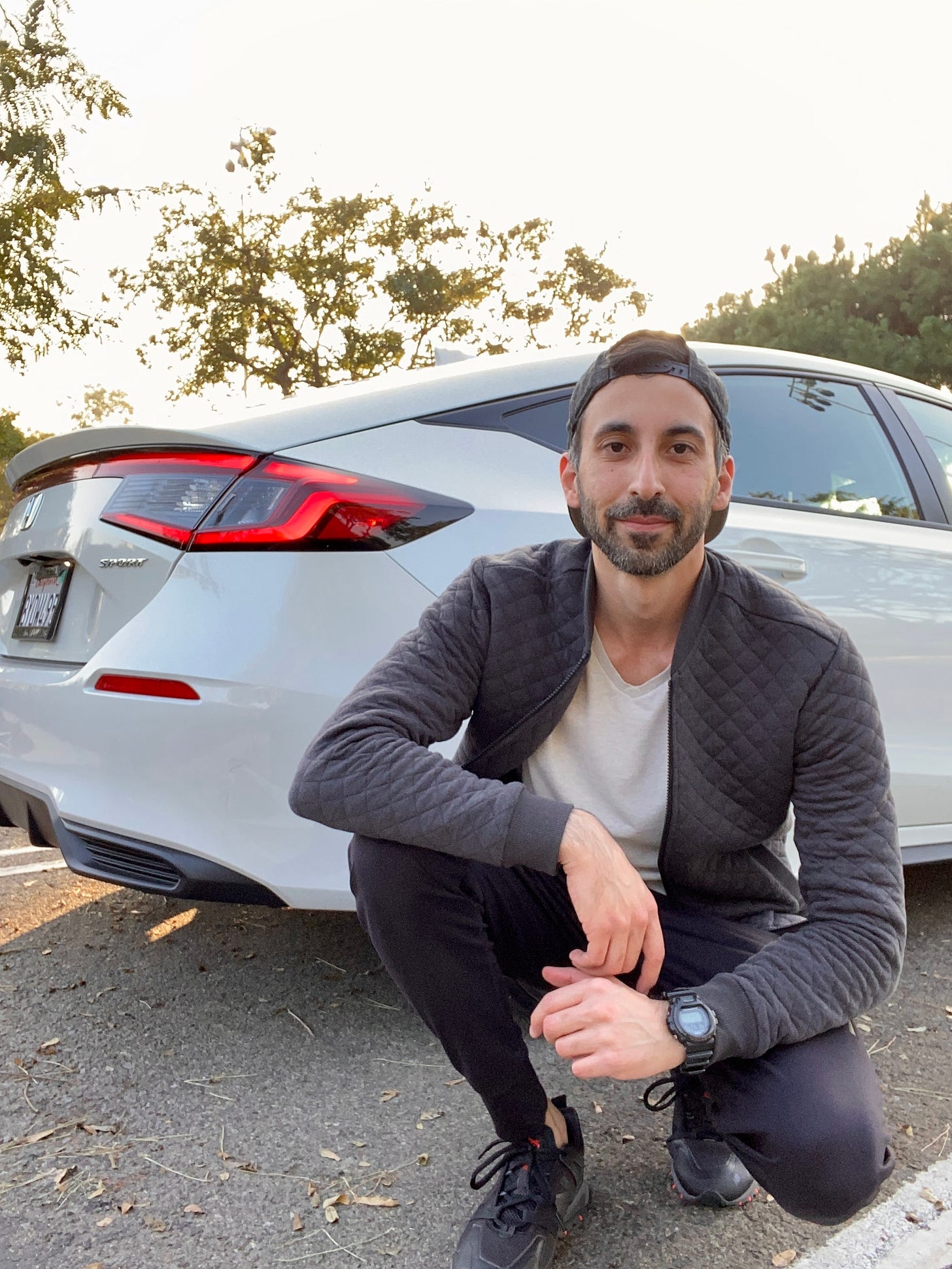
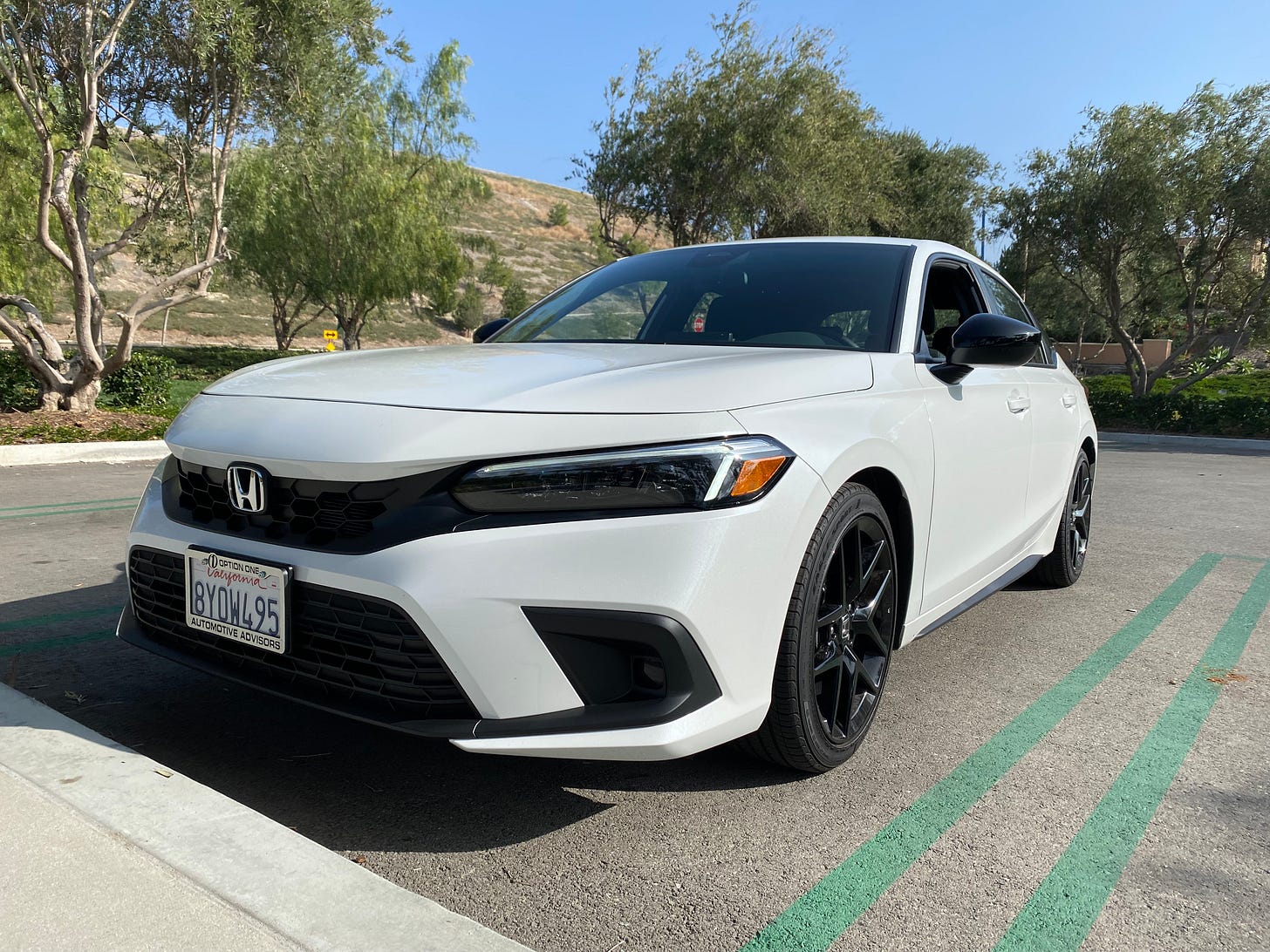
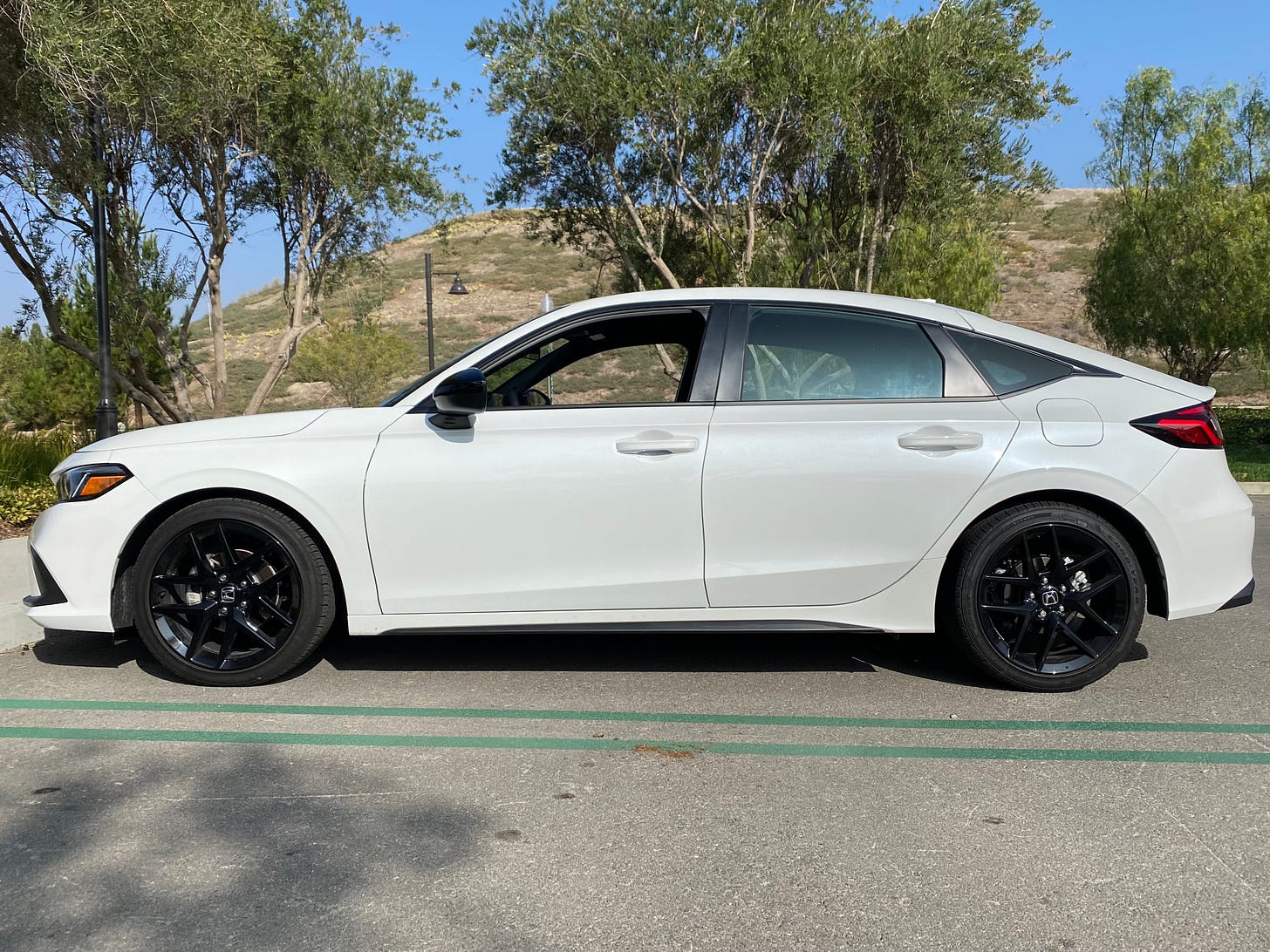
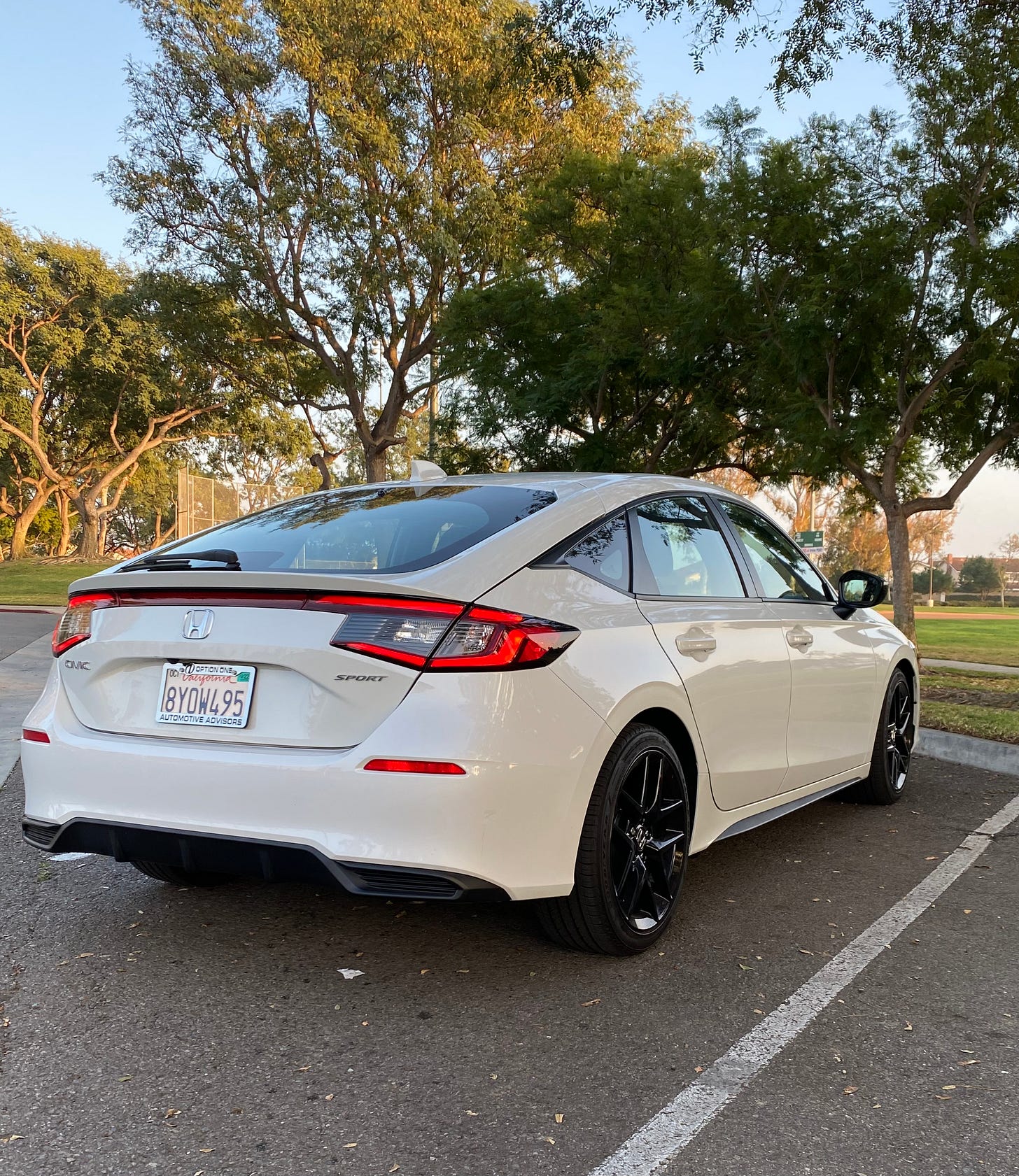
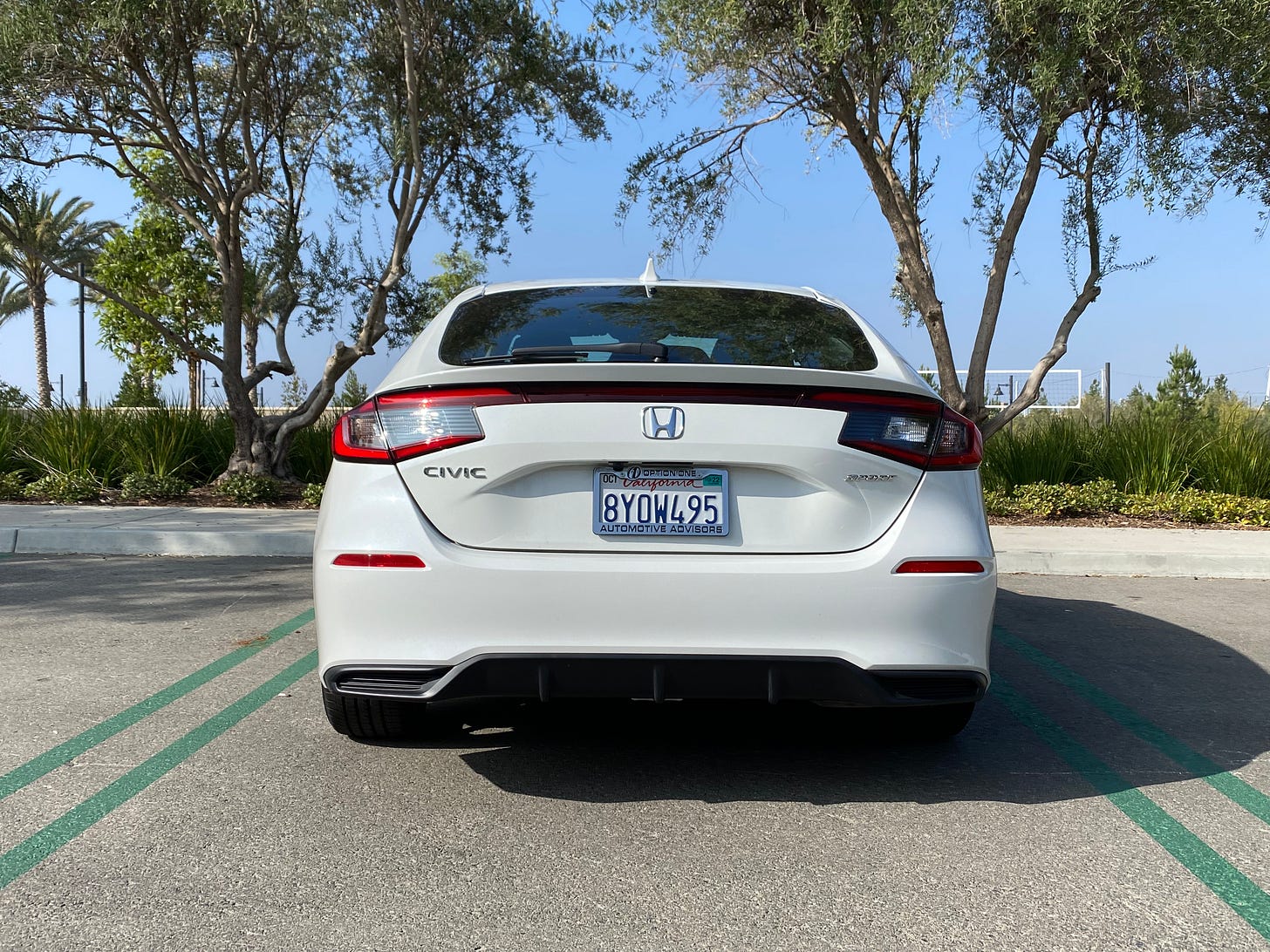
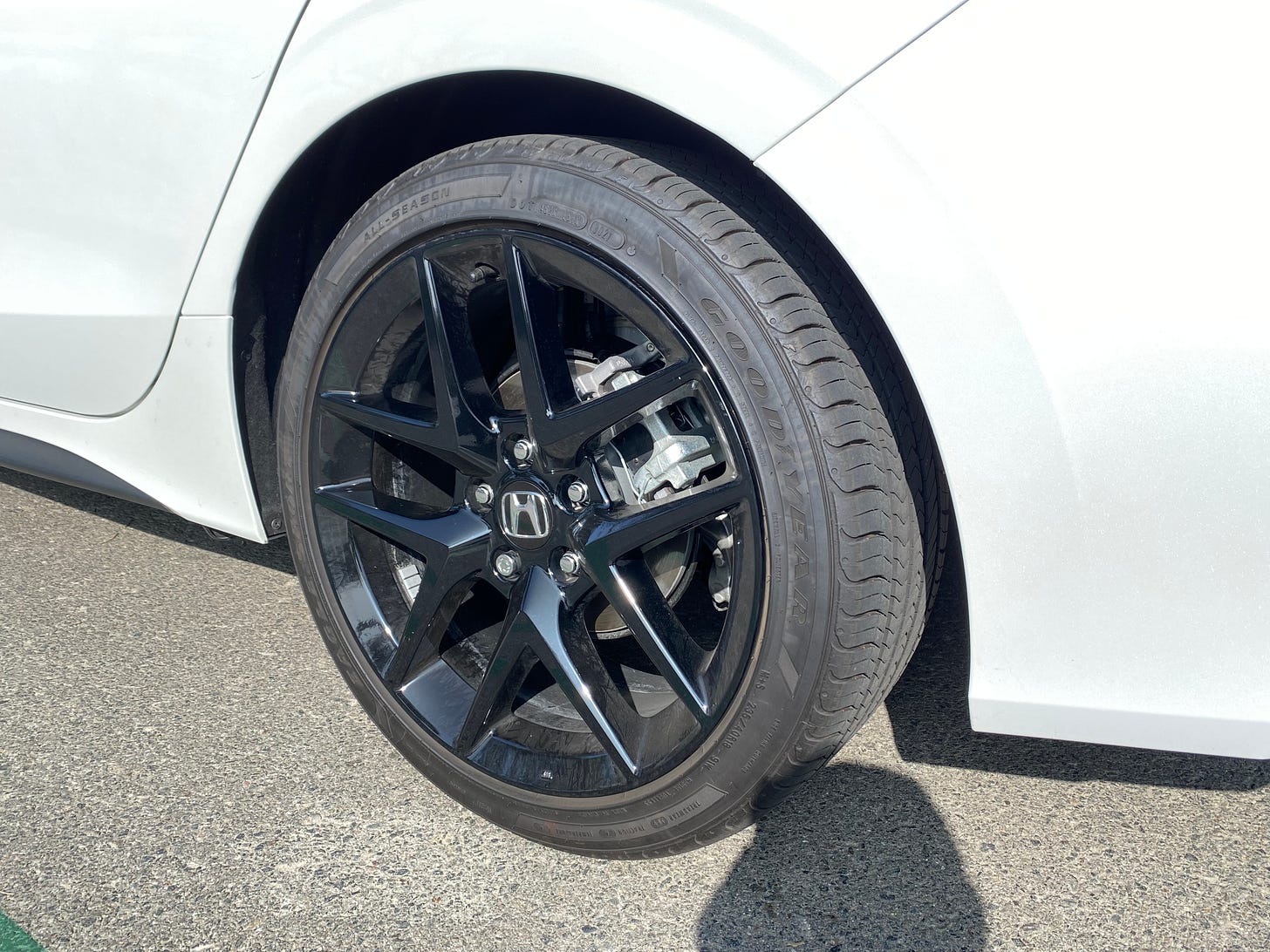
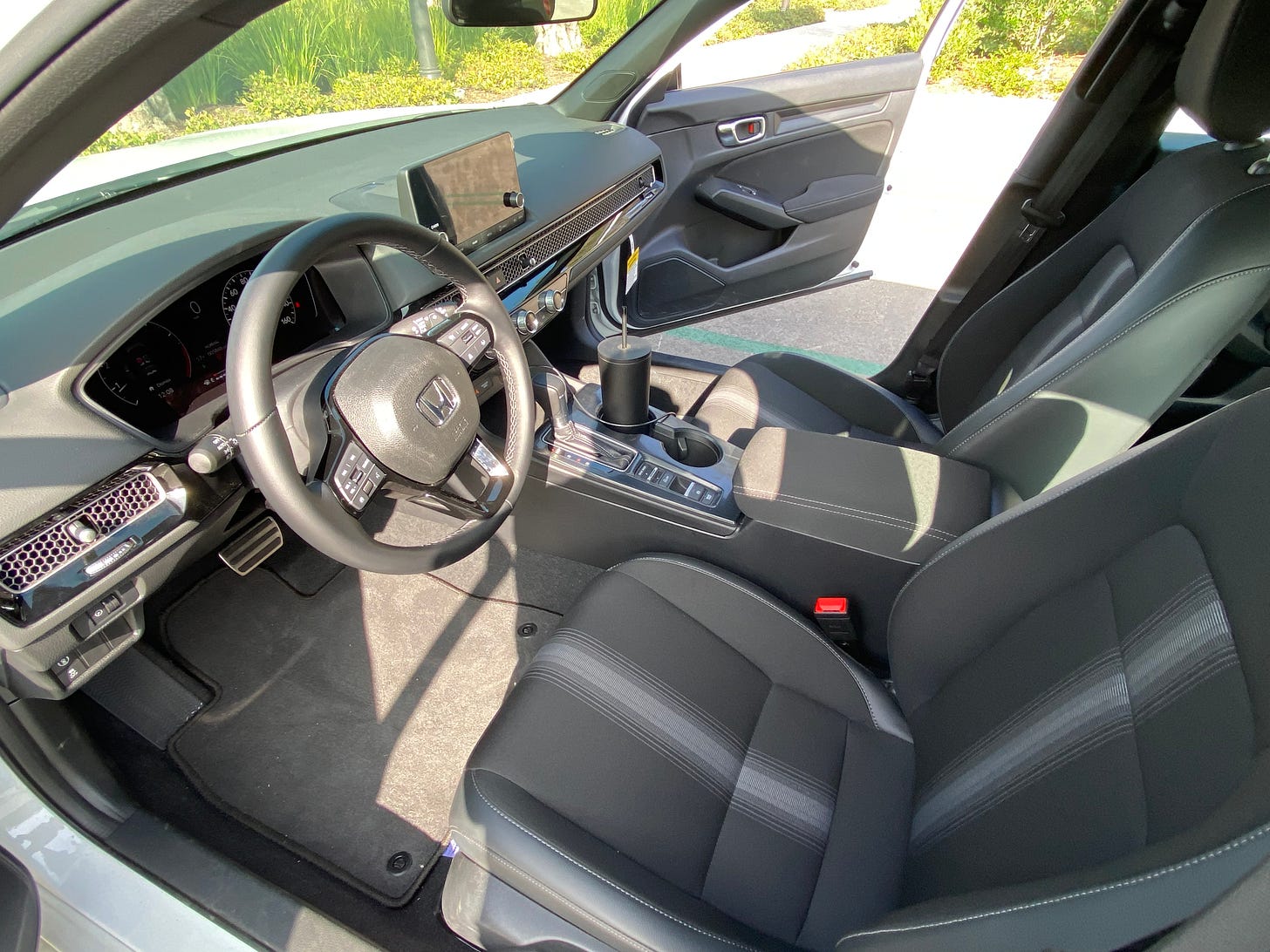
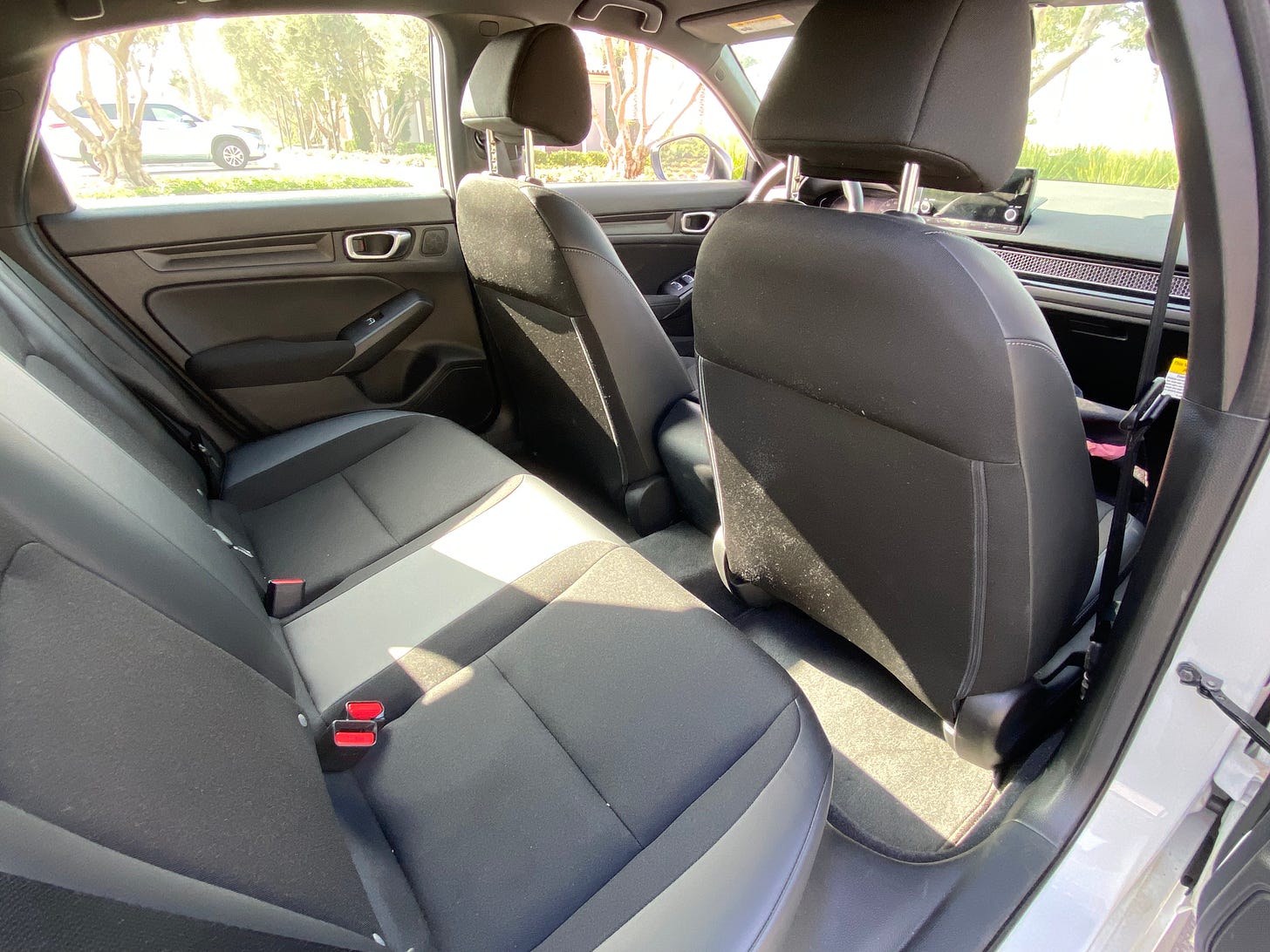
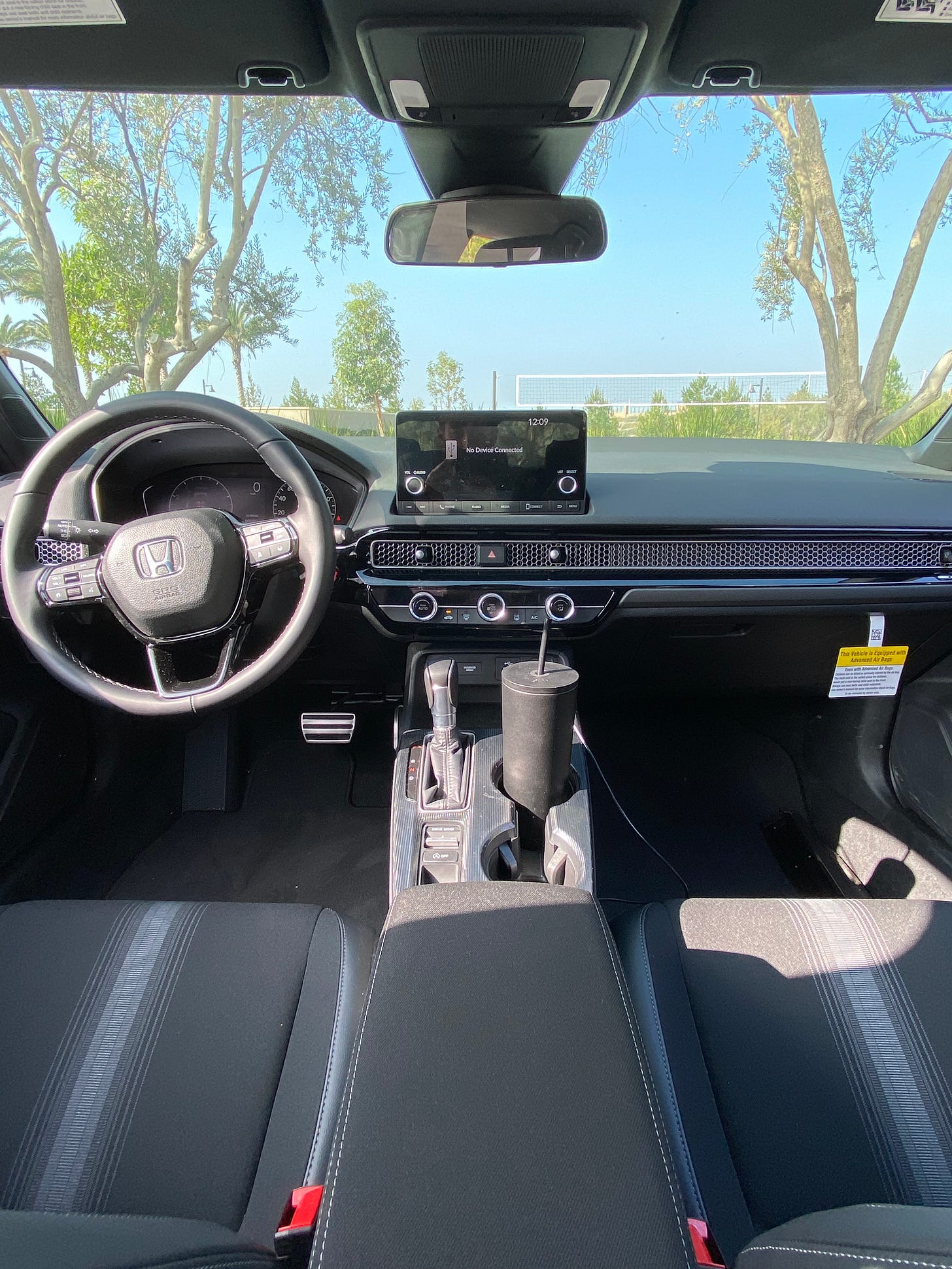
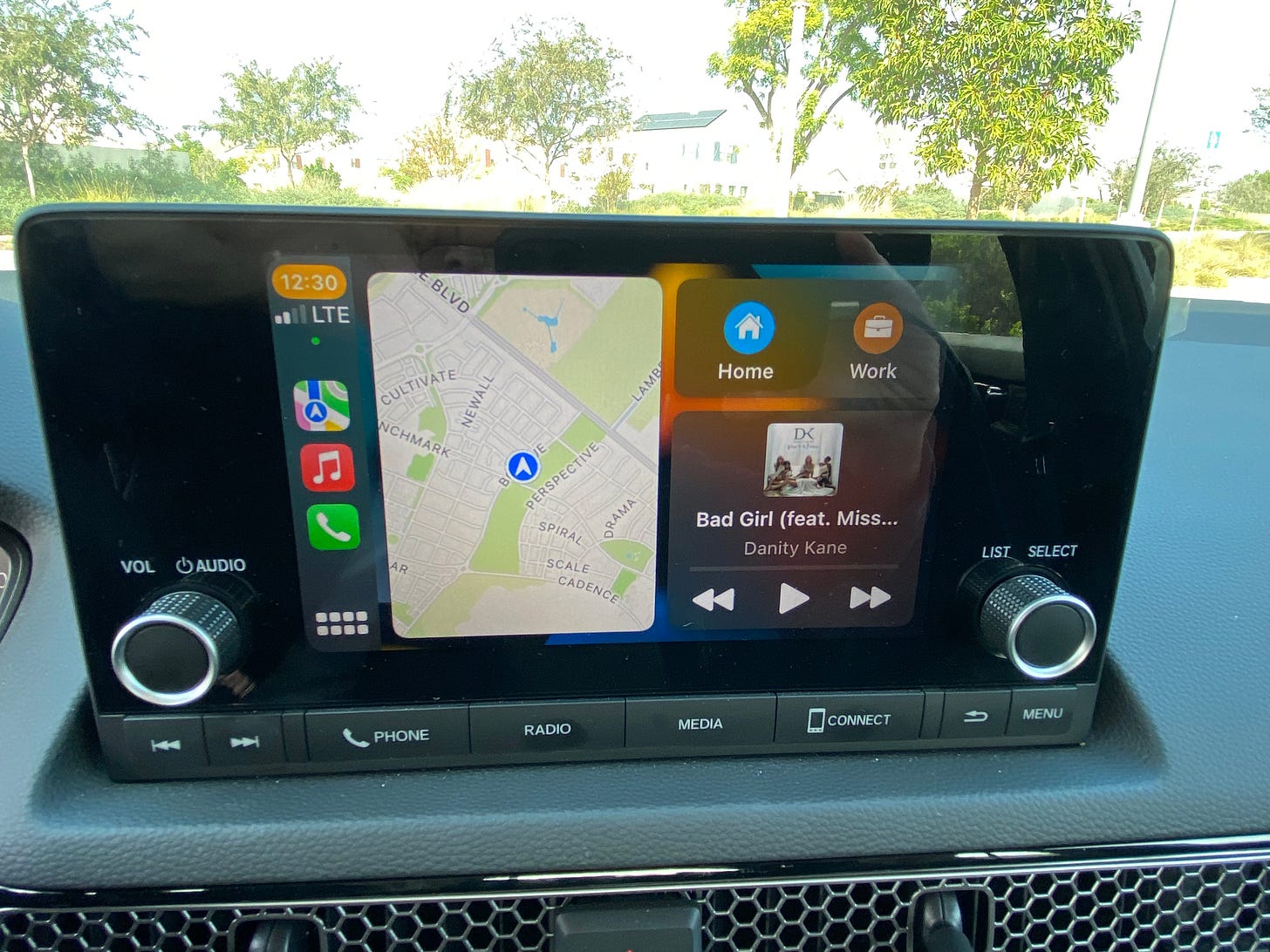
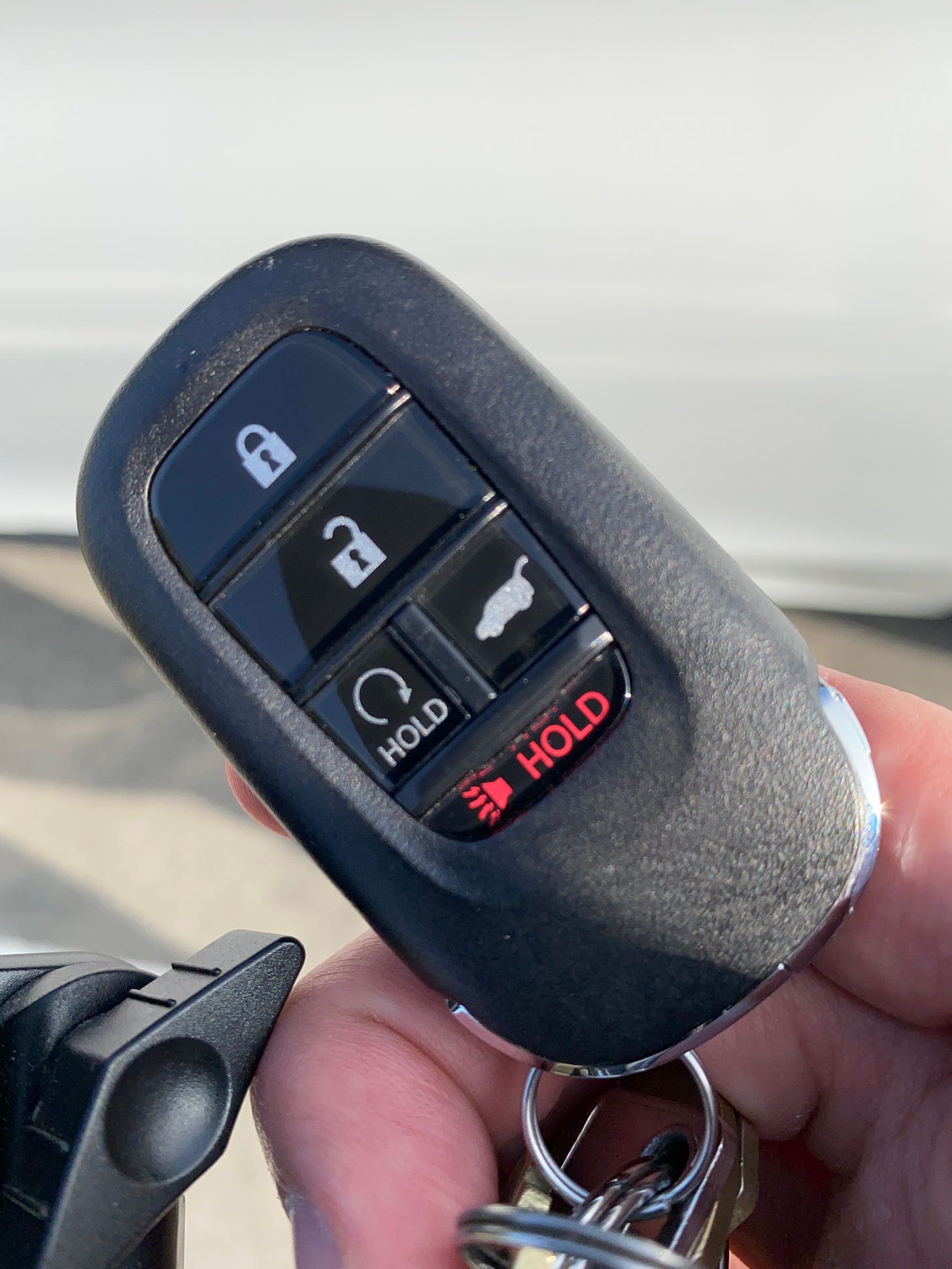
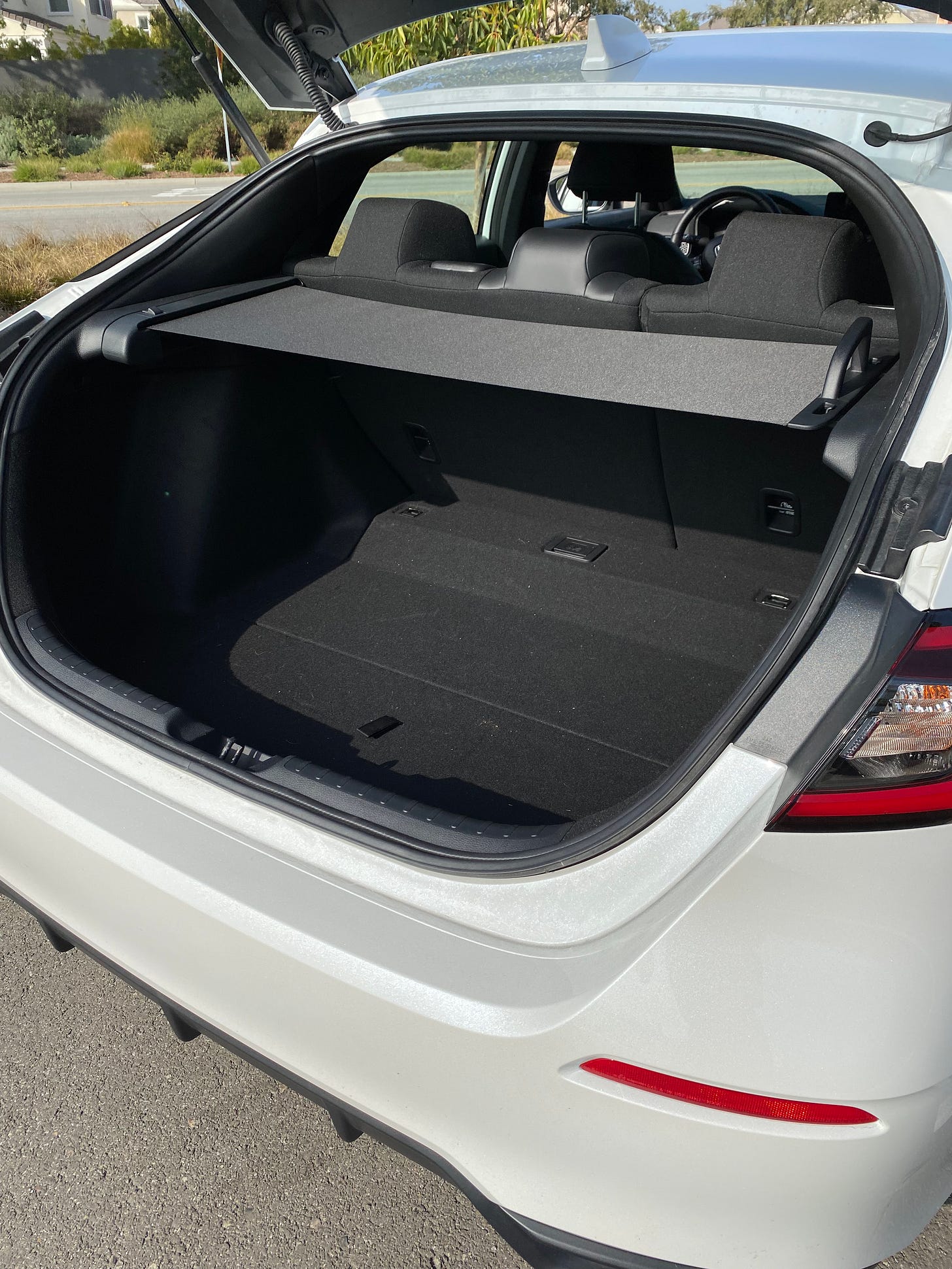
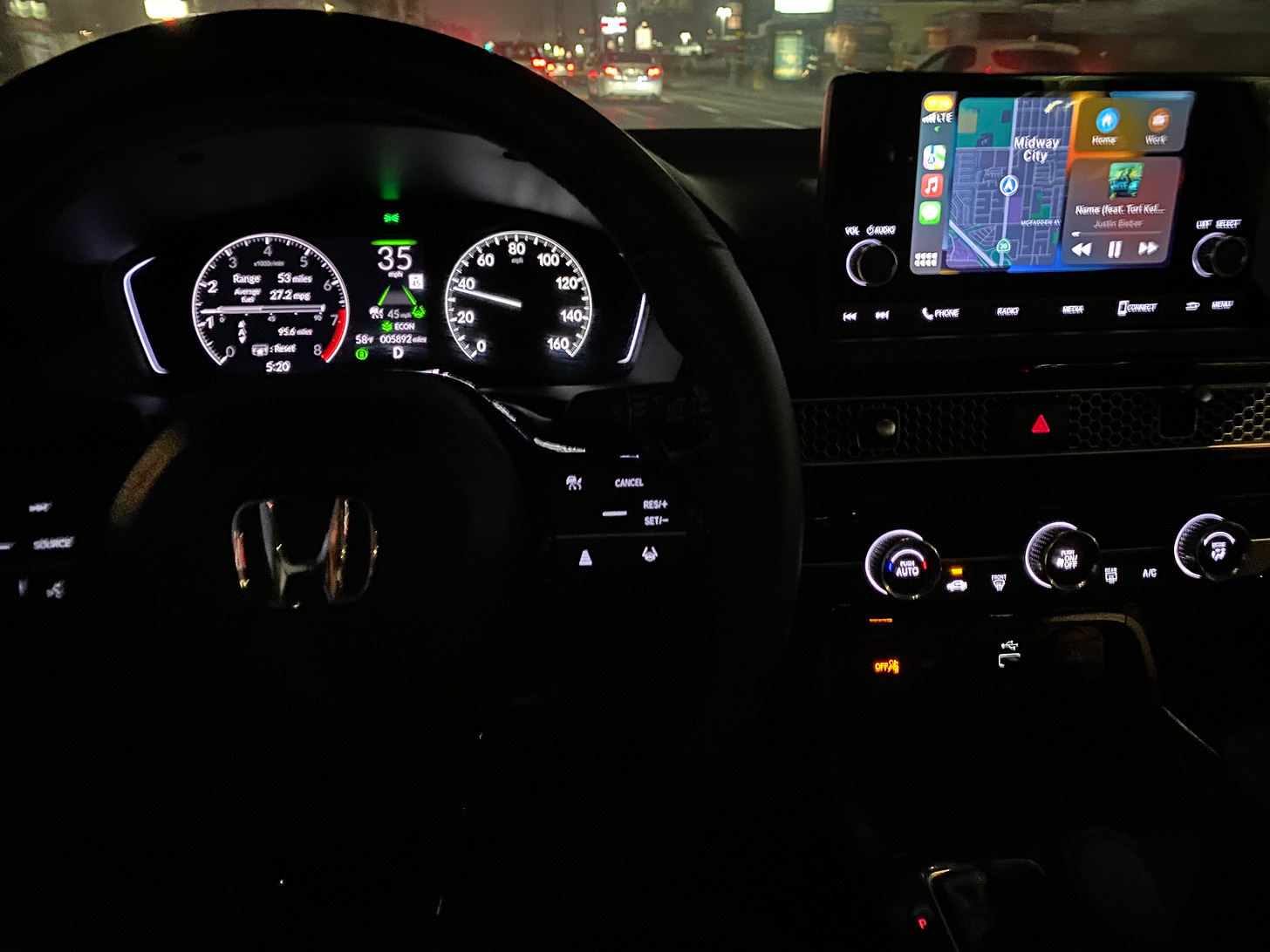
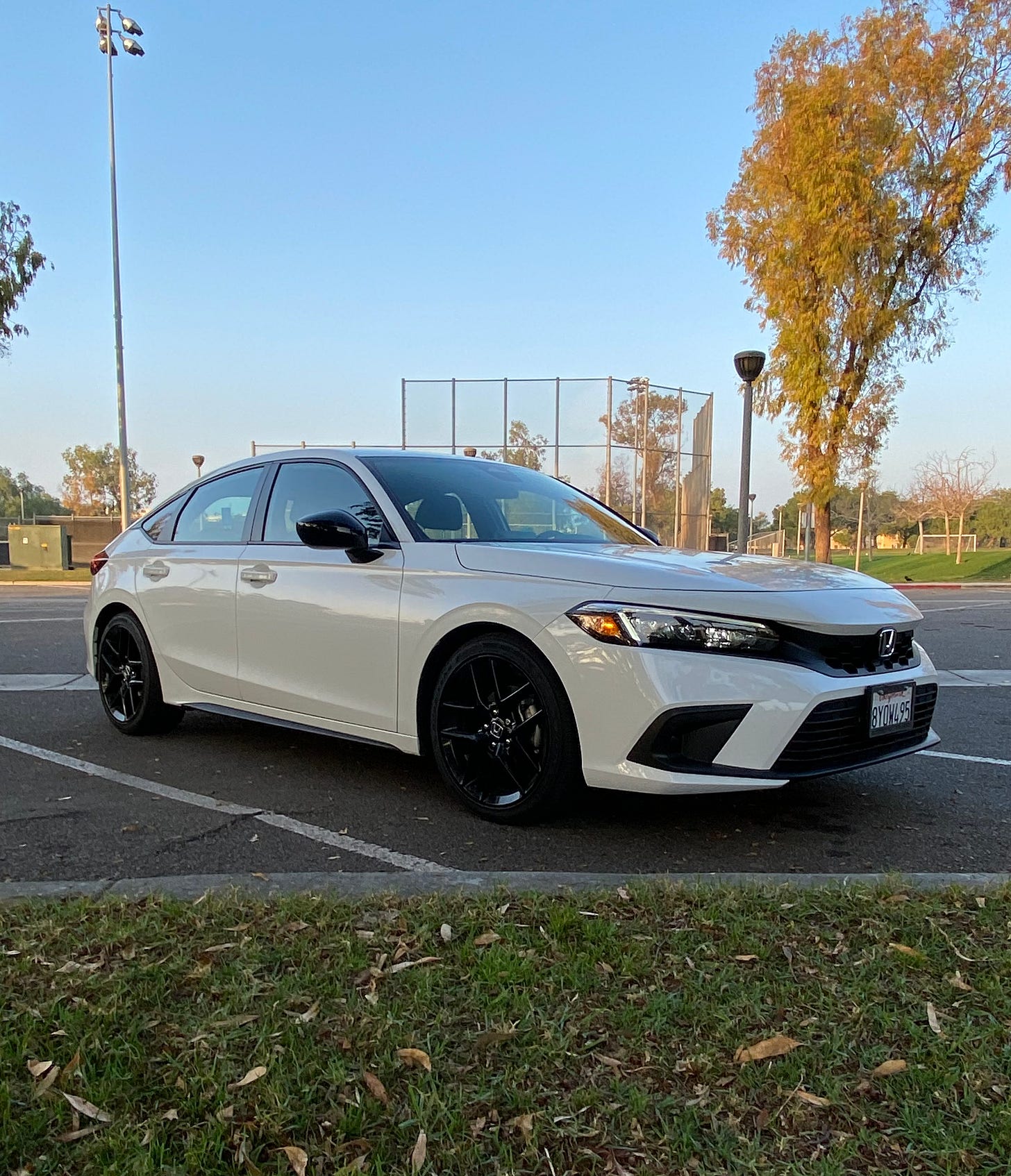
I love Honda cars <3 <3
I rented a car last week and got the 2022 Civic. It was really smooth! I feel like better than the Corolla!